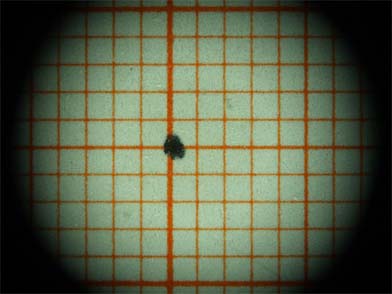In photographic technology, optical vignetting (edge decoration) is an effect that may be wanted in artistic photography, but is not desired when digitizing documents, which require a true-to-original capturing. Vignetting is essentially a decrease in brightness towards the edge area of the image, which is caused by the light guidance through the objective and the axially arranged openings connected to it.
The resulting images are significantly darker due to the drop in light from the edge and mostly the “lighter” center of the image is shown in a circle.
In order to avoid this effect with our scanners, we work with special lenses in which this effect has already been corrected, unlike conventional camera lenses. Subsequent image manipulation or correction using software is therefore not necessary.

Vignetting
When taking a picture with a microscope through the eyepiece. This photo was taken “freehand” with a compact camera above the microscope eyepiece.
Due to lack of optical adjustment, the edge of the camera sensor cannot be exposed.
Source: Wikipedia Commons (unchanged) Copyright: Creative Commons Attribution-Share Alike 3.0 Unported
